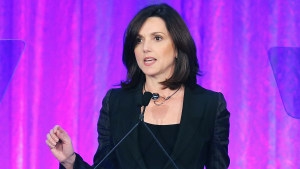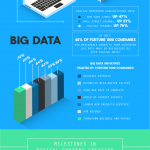Three Simple Questions This GE Exec Asks To Solve Big, Complex Problems
By Beth Comstock
September 24, 2017
Ignorance isn’t usually rewarded in most work settings. Many of us fear it: Standing up in an important meeting, unsure whether what you’re about to say will go over well. Or staring at a blank page, knowing you’ll have to get something great onto it by the end of the week–but no idea yet of what.
Moments like these used to make me nervous, but I’ve gradually come to savor them. Often it’s when we know the least about something that we can see it most clearly.
Ignorance As A Hidden Asset
As somebody who manages a number of different teams across a big, far-reaching company on the frontiers of science and technology, it’s inevitable that I end up approaching problems with incomplete information. To help get myself up to speed and weigh in productively, I rely on the experts, people who are far more informed than I’ll ever be in a certain area. But I’ve also learned to appreciate my lack of knowledge, and even wear it as a badge of honor.
How often have you seen someone in a meeting dismissed because they don’t have enough expertise? That’s been me. But over time, I’ve learned to flip the script when that happens. I’ve built my career out of sticking up for the “horizontal” perspective. I look for patterns and commonalities that become apparent only when you look across seemingly disparate parts of a company, or even seemingly different industries.
It’s because my job requires me to stay in constant motion, moving from project to project, business to business, that I have the opportunity to look for these big connections. Expertise confers power, but the trade-off can be a diminished ability to see the big picture.
To keep that big picture in mind, and to help a bit of my ignorance rub off on my teams, I try to ask a set of carefully uninformed questions at meetings. Here are three that have proved consistently useful.
1. What Problem Are We Trying To Solve?
For me, this is the best starter question. It helps overcome inside-out, product-first thinking. It cools the enthusiasm for making something just because we can, not necessarily because the customer needs it.
A good variation on this is, “Why are we here? Sometimes, as a project heats up, we get consumed by the details of the problems we’re solving. Answering, “Why are we here?” is a good way to reset the team and bring everybody back to the mission.
2. Do We Really Need To Worry About This?
One of the most useful questions I picked up from working with GE’s board chairman Jeff Immelt is this one: “Why are you solving step 40 when we haven’t gotten to step five?
It’s important to take long-term planning seriously, but not so seriously that you mistake the plan for reality. That set of tactical problems on page 50 of your five-year plan? They aren’t real yet, and they don’t need to slow you down right now.
3. Why Now?
Great inventions come along (or scale) at the moment when they’re both possible and needed, but not before. For example, new advances in the materials that go into solar cells have meant record low prices for solar panels in the last few years, making it possible for people to generate power on site rather than buy it from far away. Even though solar power has been theoretically possible since the 1800s, it’s only recently started to scale.
So, for all of my projects, I try to ask, “Why wasn’t this possible or needed before?” If the team can answer that question really well, I know we have a handle on what our point of differentiation in the marketplace is. There are a lot of great ideas that died because they were brought to life too soon or too late, or were realized by people who couldn’t tell the story of why they were needed at a particular moment.
That storytelling element is essential–and not just for the “Why now?” question, but for the previous two as well. The answers to each of these three questions are all plot points, so to speak, in the story of any new or evolving product or service. You can’t sell if you can’t tell, and good stories are all simple, relevant, and believable.
But you can’t identify whom you’re targeting or why it’ll be different (or, for that matter, whether or not your solution already exists) if you forget to leave enough room for ignorance–so you can embrace it strategically.
Beth Comstock is vice chair at GE. Follow her on Twitter at @bethcomstock.
Fast Company , Read Full Story
(33)













